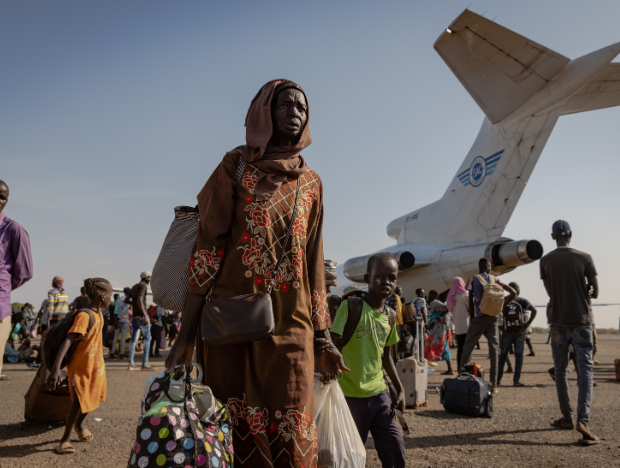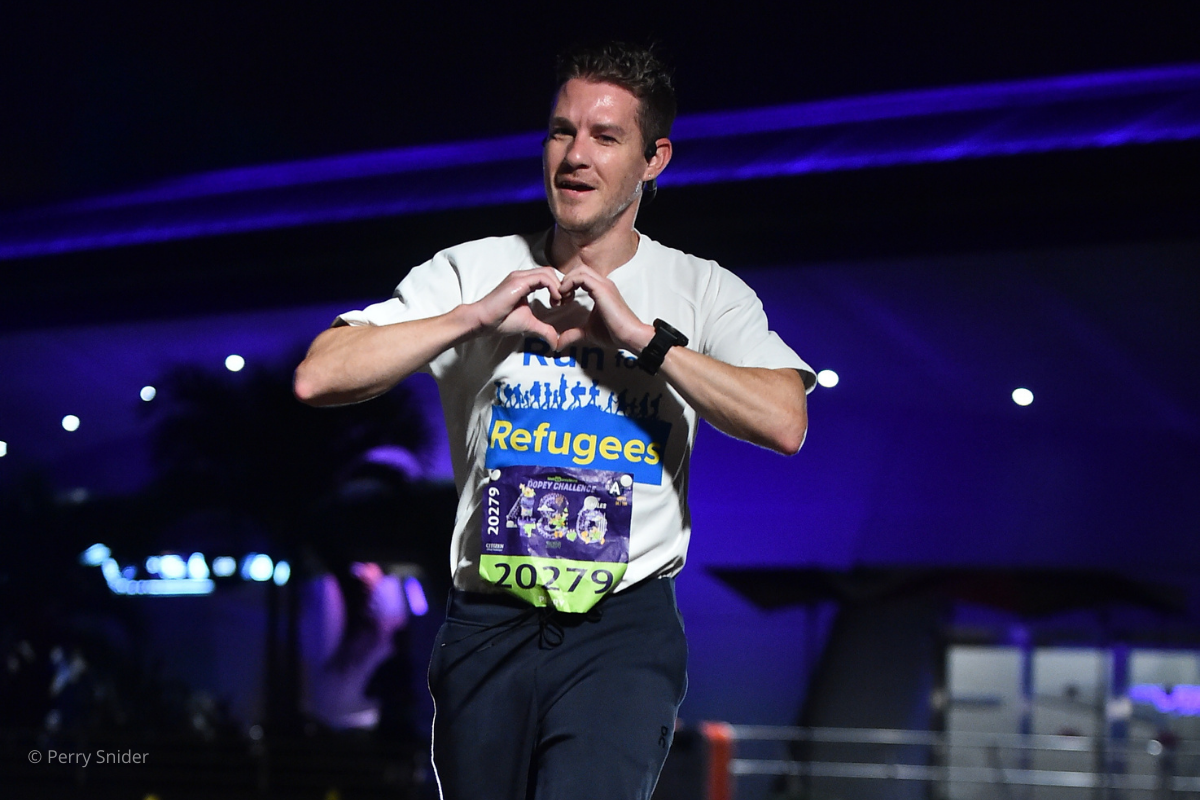Natural disasters, storms and droughts: The top climate emergencies for refugees in 2023

The climate crisis is happening now – destroying livelihoods, disrupting food security and driving displacement.
In 2022, an estimated 32 million people were displaced within their own countries by extreme weather events such as floods, storms and drought. If serious action is not taken immediately, this number is predicted to increase to over 200 million people displaced annually by 2050.
Climate change affects everyone, but those in vulnerable situations are especially susceptible to the devastating impact of climate-caused disasters. For refugees and displaced people, climate change is a crisis on top of a crisis — forcing people to flee, often for a second or third time, in search of safety and resources.
“The climate emergency is punishing displaced people three times; It tears them from their homes, it compounds their crisis in exile and destroys their homeland, preventing them from returning,” said UN High Commissioner for Refugees, Filippo Grandi.
Learn about some of the top climate emergencies from 2023 and see the dangerous impacts they’ve had on the lives of displaced people.

Over the past few years, the climate crisis has caused an increase in natural disasters—like earthquakes, hurricanes and tsunamis—which have been especially devastating for people who have already been displaced from their homes. On February 6, 2023, two large earthquakes hit southeast Türkiye. Tremors and aftershocks were felt in Syria and across the region. The earthquakes claimed more than 55,000 lives, injured more than 107,000 people and caused immense destruction to homes and infrastructure, leaving entire cities and towns in ruins. Many who survived were left homeless or too traumatized to return to their homes.
Before the earthquakes, 12 years of conflict in Syria left millions of families in both Syria and Türkiye displaced, making them especially vulnerable — often economically insecure and living in tents, flimsy shelters or partially destroyed buildings. Among the 15 million people impacted by the earthquakes in Türkiye were an estimated 1.74 million Syrian refugees. While another 4.1 million people in northwest Syria required humanitarian assistance due to the earthquakes.

The Horn of Africa region is currently experiencing the longest and most severe drought on record — six consecutive years of below-average rainfall. The drought is threatening lives and livelihoods, including those of millions of refugees and internally displaced people.
More than 3 million people in drought-affected areas need humanitarian assistance. A majority of the population depends on farming and livestock production as their main sources of income, which means that climate change and severe droughts have a dramatic impact on the livelihoods of millions across the region. Additionally, the drought is causing severe water scarcity across the region, forcing people to travel longer distances in search of water and food.
An estimated 2.3 million people have been internally displaced in Somalia, Ethiopia and Kenya due to drought. While more than 264,000 new refugees and asylum seekers have crossed into drought-affected neighboring countries.

Storm Daniel hit eastern Libya on Sunday, September 10, 2023, leaving thousands dead, many more missing, destroying buildings, uprooting people from their homes and submerging hospitals, schools and essential infrastructure. The devastating floods and collapsed dams took the lives of more than 4,000 people.
Approximately 50,000 refugees and asylum-seekers are registered with UNHCR in Libya, including over 1,000 who were already living in the affected areas prior to the floods. On top of this, the storm caused new mass displacement, forcing an estimated 60,000 people to flee their homes.

South Sudan: Four years of historic rains in Bentiu, South Sudan have submerged farmlands, ancestral homes and roads, turning Bentiu into an island. Some 360,000 people have been forced to flee due to the floods. They now live in internally displacement sites below the waterline. South Sudan is highly vulnerable to the impacts of climate change with floods affecting about a million people every year in a country that is one of Africa’s most fragile and insecure.
Now, the crisis in Sudan is bringing additional hardships. The conflict has cut off the flow of food and other goods from Sudan, which was the main supply route for the region, causing prices to skyrocket.
Refugees who once found safety in Sudan are now being forced to flee violence once again and have started returning to South Sudan, only to find that their ancestral lands are no longer habitable due to the flooding. With nowhere else to go, many are sleeping in the open in internal displacement sites that have limited capacity to support them.
Horn of Africa: Severe flooding has displaced thousands of families in the Horn of Africa — including refugees in Ethiopia, Kenya and Somalia. Storms have caused mass injuries and killed thousands of people. Due to the destruction of roads, buildings and infrastructure, many people have lost their livelihoods and access to critical services, like healthcare. Meanwhile, hundreds of communal latrines have been damaged, creating a concerning sanitation situation that is putting people at risk of infectious diseases, including cholera.
Immediate needs for flood-affected communities include food, emergency shelter, relief items, clean water and hygiene services. Families living in flood-prone areas also need urgent support to relocate to higher grounds.
How you can help…
For millions of people, climate change is not theoretical. It's life or death. And most do not have the resources necessary to adapt. More than 70 percent of the world's displaced people live in countries on the frontlines of the climate crisis. Sign your name now to join USA for UNHCR and speak up for displaced people who are suffering from the dire impacts of climate change. And donate to USA for UNHCR to send emergency relief items to displaced people impacted by climatic shocks and disasters.


